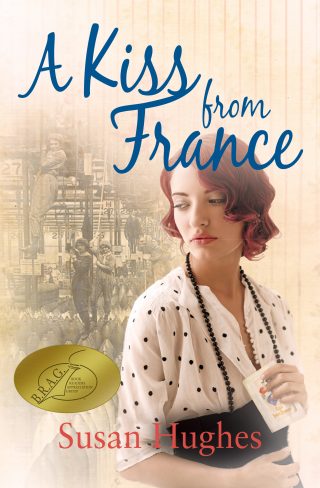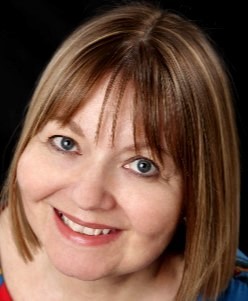 How I wove in the history to my story and what I chose to include:
How I wove in the history to my story and what I chose to include:
My novel, A Kiss from France, is set during the latter part of WWI and into the first year of the peace (1917-1919). I didn’t want to write about the trench experience because that was primarily a male perspective. I was more interested in the women left at home because their history is a dynamic one: they didn’t sit still and wait for the war to end, instead they also became active participants in the war effort by taking over the absent men’s jobs and keeping the country going.
At the time my story is set the British people were war-weary and weighed down with grief and loss, so I explored this through the character of Eunice Wilson. Amidst all of this sorrow, women began to embrace new-found roles and enjoy greater independence. With this change, came opportunities for self-fulfillment, but also to go off the rails because did it matter what you did one day if you might be dead the next? This attitude promised potential for multi-layered complications and the character of Lizzie Fenwick embodies this.
During my research into WWI, I discovered that munitionettes put notes in ammunition shells boxes that went to the western front. Soldiers found them and replied. Many war time romances started that way and this was how Lizzie Fenwick’s story begins. It’s also where many of the plot twists come from as her desire for independence in a changing world becomes complicated by love.
WWI history I included then decided to cut:
Stories and gossip about German spies and attempts to subvert Britain’s war effort by the enemy were rife in the British press during the war. I initially included a sub-plot which involved industrial espionage at the munitions factory. In the end, I cut it because the other threads became more important to the story I was telling.
Why is the history important?
I saw a quote on Twitter the other day which said, “Historical novelists put the flesh back on the skeleton that is history.” (Alessandro Manzoni, poet and novelist, 1830). History provides the framework, the timeline of events and the facts. Within this the cultural, political, economic and social environment of the period determines how our characters might be expected to behave. It’s important that authors of historical fiction reflect this.
Advice for someone starting out to write historical fiction:
I might be about to say something which is anathema to purists but while I say respect the history, I don’t necessarily think you should let the facts get in the way of a good story (within reason). We are, after all, writing fiction. If you make your characters real enough and believable enough, you’ll take the reader with you.
Why is historical fiction important to me?
I wrote A Kiss from France because I found some WWI postcards belonging to my great grandmother. Holding a piece of history which was personal to me really brought the past to life and fired my imagination. However, I knew nothing about this part of my ancestor’s lives, so I made up a story around these postcards. That is what I like about historical fiction. You can take an artefact (a postcard) from the past, or a snippet of historical information (letters in shell boxes) as a starting point and tell a story which breathes life into characters who could have existed all those years’ ago.
About Susan Hughes-B.R.A.G. Medallion Honoree
Susan Hughes has never been able to pass a bookstore without going inside. A life-long reading habit combined with her fascination for the huge political, social and economic changes wrought by events in the twentieth century is now fueling her writing. Her first novel, A Kiss from France, was inspired by a handful of WWI silk postcards found among her grandmother’s possessions. She is now working on her next book, set in 1930s London.
Author Website

As an historian turned historical fiction writer, I find it difficult to tell myself that it is a novel so I can make it up. As a reader I am irritated by glaring anachronisms, although I am aware that many readers would not even notice these. I do think that, if a writer is using a real and recognisable background, be that one of time or place, any ‘tweaking’ is acceptable but should be acknowledged for the purists in an author’s note.
I do like Manzoni’s quote about putting the flesh on the skeleton of history! It’s that aspect of I love most about family history – learning about the social history of the time (i.e. their lives) and putting “my people” in context. Or, as you put it so well, breathe life into them!
I was interested to read that you’d cut what sounded like an intriguing sub-plot when the characters’ stories became more important. I find when I’m researching for my Esme Quentin novels that I can easily get over-excited by something I come across and desperately want it in the plot because it’s so fascinating. If I’m not careful things can get out of hand! But eventually you have to go with your gut instinct and know what to keep and what to ditch to make a better story.
When it comes to fiction, no-one knows everything of what “ordinary” people felt and did in response to historical events and as long as they’re credible and consistent with the character, you can let your writer’s imagination fly. That’s all part of the fun, after all!
I agree about the anachronisms, Janet. What I was getting at really was not letting large chunks of historical detail get in the way of the story. Your suggestion of an author’s note is a good one. I used an author’s note in my novel, just in case!
I know what you mean about letting a good idea run away with itself! I get sidetracked by interesting snippets of information when I’m researching and probably spend too much time trying to work out how I can weave them into the main plot, only to be forced to leave them ‘on the cutting room floor’. They are never forgotten, however. They go into my ‘inspiration file’ for possible future use.
Love this. 🙂 (I am also now following you on Pinterest. 🙂
Thanks, Victoria, hope you enjoy my Pinterest boards. I use them as part of my inspiration toolbox too.
Couldn’t agree with you more. Everyone has a story, and as soon as it occurs it becomes a part of history. As an historian, I am well aware that collective history is made of many individual parts.
An excellent point, Barbara Ann. It’s the individual parts that interest me and where I often find the real gems.